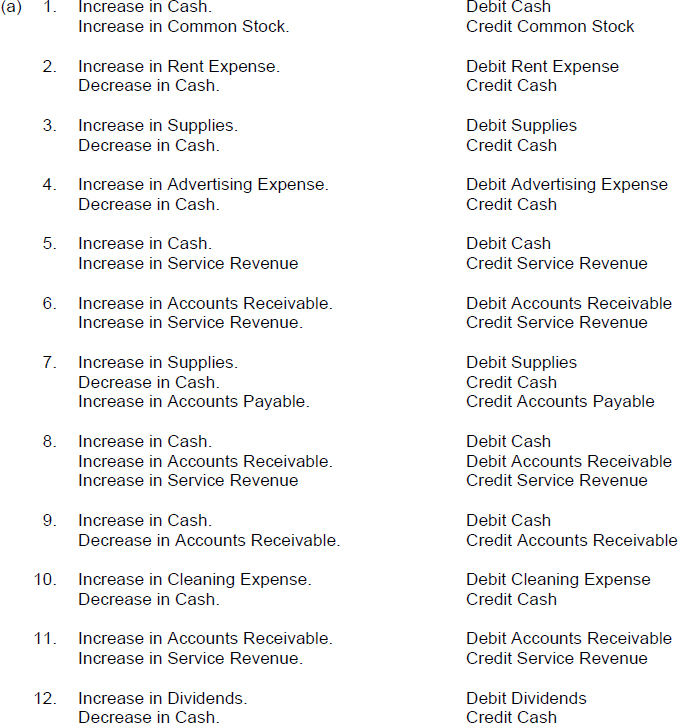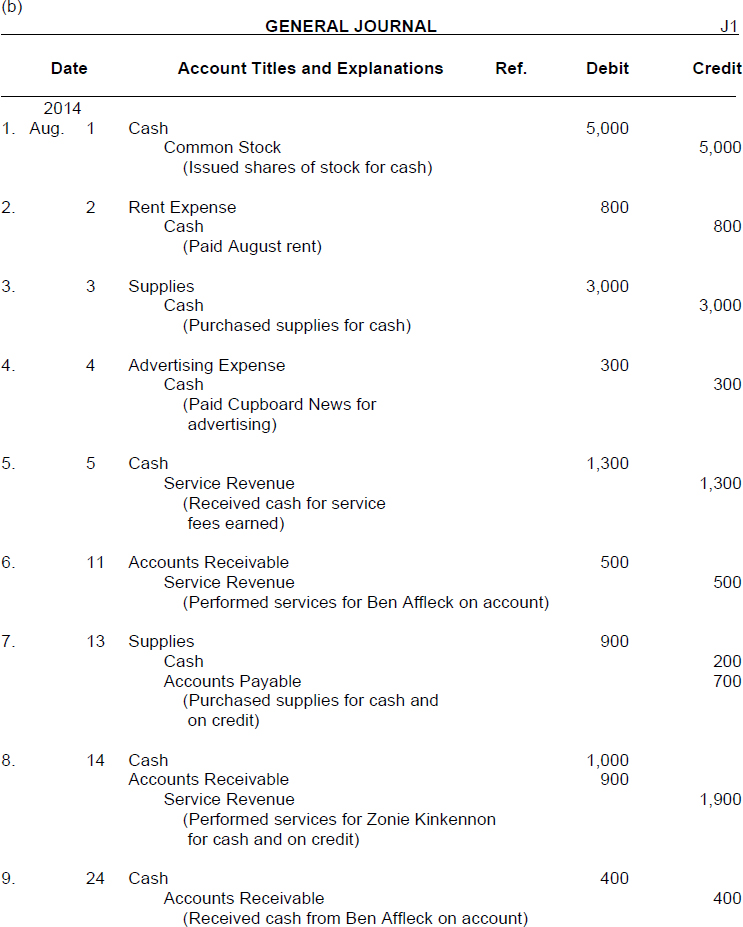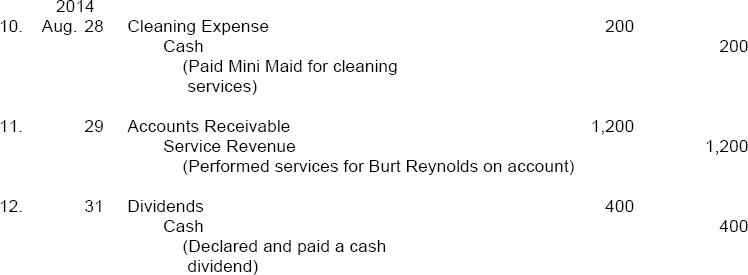SOLUTION TO EXERCISE 2-3
Approach: Write down the effects of each transaction on the basic accounting equation. Think about the individual asset, liability, or stockholders' equity accounts involved. Apply the debit and credit rules to translate the effects into a journal entry.
TIP: Refer to the Solution to Exercise 1-2 for an analysis of the effects of the transaction on the individual components of the basic accounting equation. Refer to Illustration 2-1 for the summary of the debit and the credit rules.



TIP: A journal entry must contain equal debits and credits. That is, the total amount debited to individual accounts in an entry must equal the total amount credited to individual accounts. Thus, the dual (two-sided) effect of each transaction is recorded in appropriate accounts. This double-entry system offers a means of proving the accuracy of the recorded amounts. If every transaction is recorded with equal debits and credits, then the sum of all the debits to the accounts must equal the sum of all the credits to the accounts.
TIP: A journal entry is either a simple entry (an entry that contains only one debit and one credit) or a compound entry (an entry that contains more ...
Get Problem Solving Survival Guide to accompany Financial Accounting, 8th Edition now with the O’Reilly learning platform.
O’Reilly members experience books, live events, courses curated by job role, and more from O’Reilly and nearly 200 top publishers.

